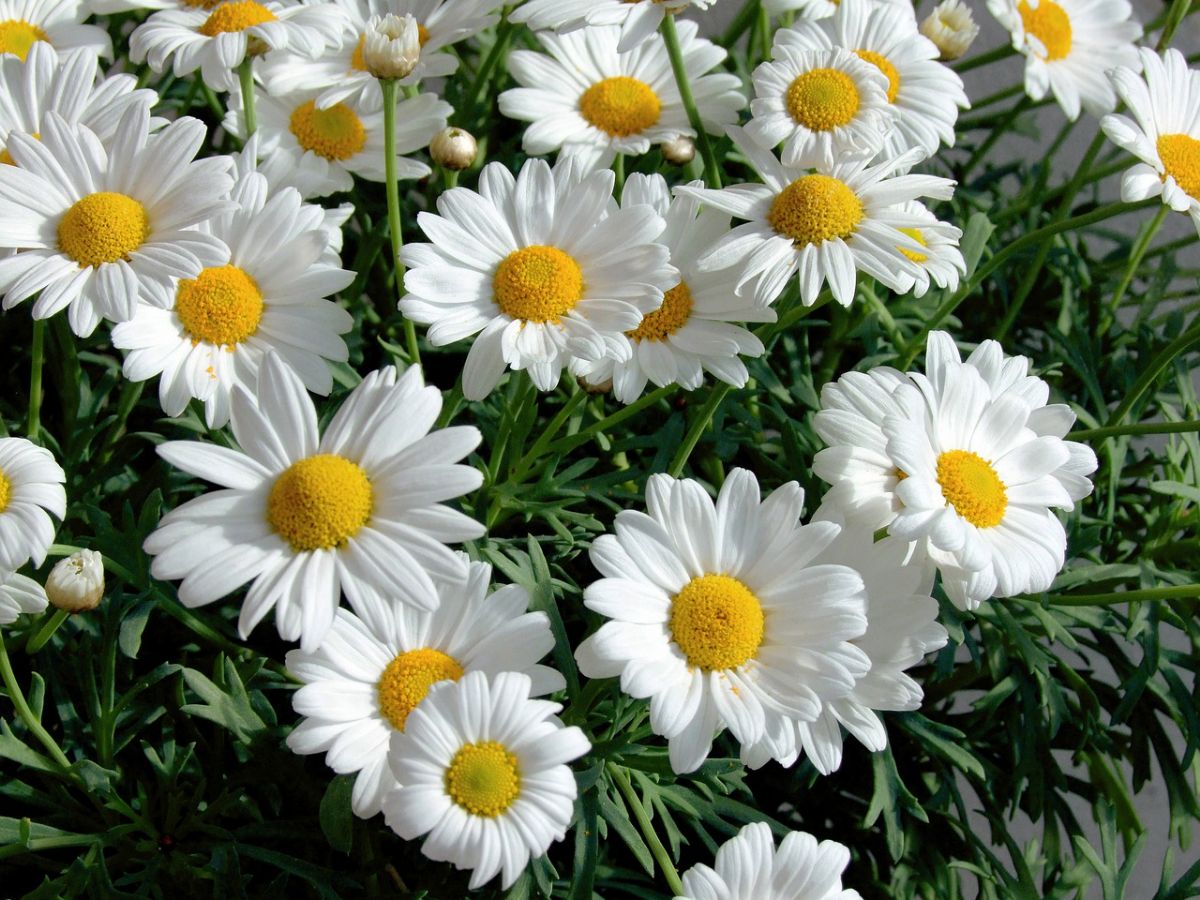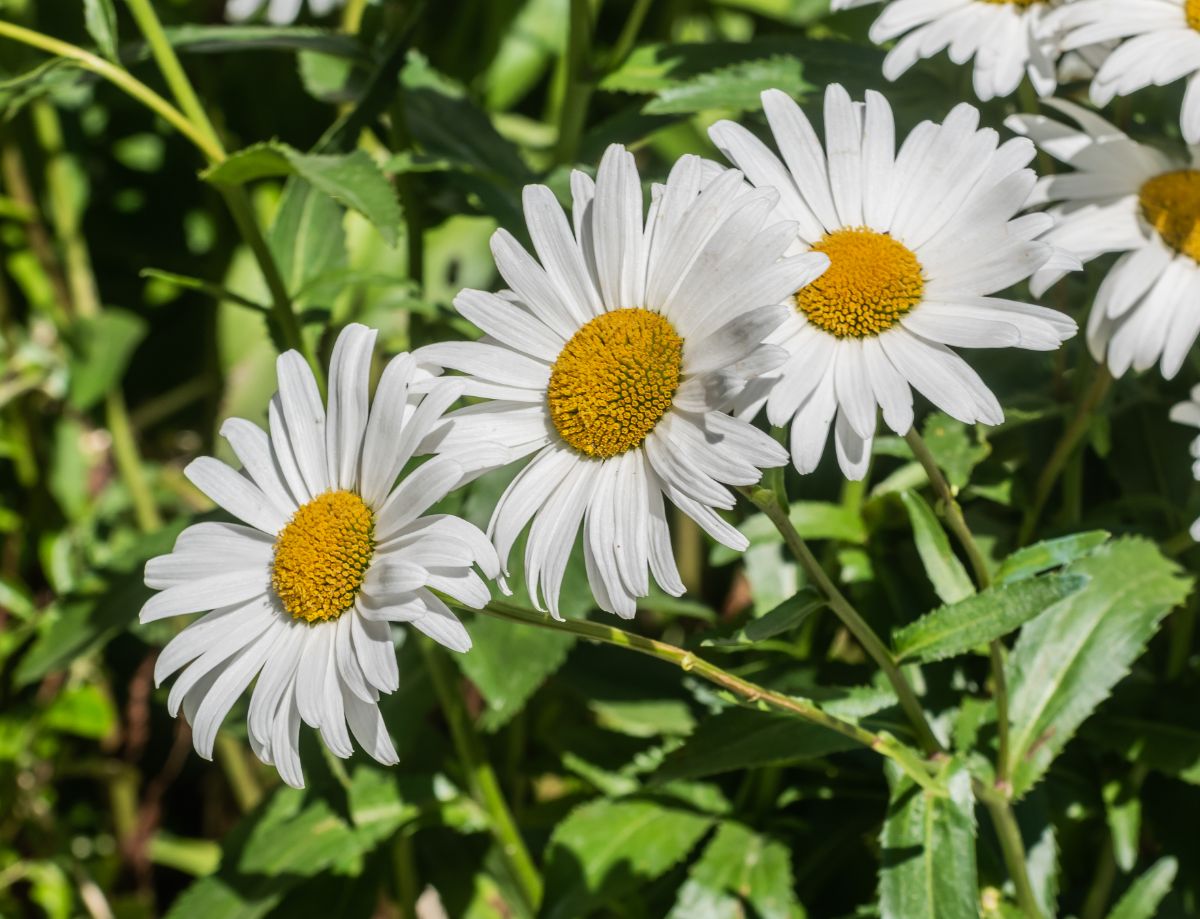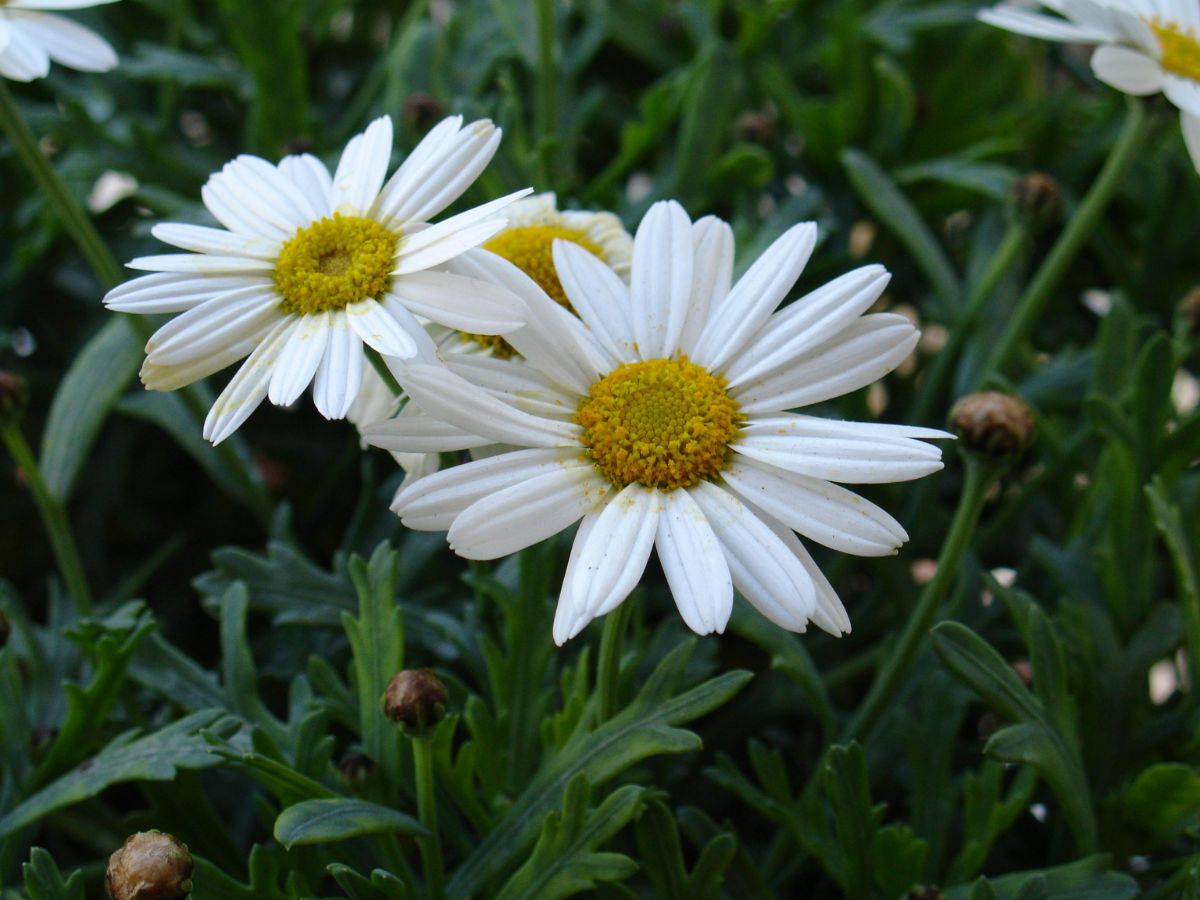
You probably haven't heard of before Leucanthemum maximum. But maybe you have heard about the giant daisy or margaritón, two common names by which it is known.
It is very similar to the margarita, but of a much larger dimensions. Do you want to know more about this plant? Its characteristics, uses and care? Well let's get to it.
How is the Leucanthemum maximum

This plant is actually a perennial herb and native to Europe (from the Pyrenees) that easily reaches 75 cm in height. Formerly its scientific name was Chrysanthemum maximum, but it was changed to the current one.
It has a fairly thick rhizome and erect, long, green stems that do not branch and, if they do, it is from the upper half. As for the leaves, they are a shade darker than the stem, and can be about 2,5cm long with a toothed silhouette. Of course, as you go up the stem, the leaves get shorter and shorter.
However the most striking thing about this plant are, without a doubt, the flowers. They are quite large, between 6 and 10 cm in diameter, and an attraction for butterflies and bees. Similar to the daisies we know, it also has a central yellow button and white petals.
Its natural habitat is that of pastures, clearings of deciduous forests, pine forests, rocky landings or gravel. Areas where it can allow you to have adequate humidity but at the same time all the sun it needs to develop.
Caring for the Leucanthemum maximum

Once you know a little more about the margariton, its images will have made you love it in your garden. And it is impressive to see it and have a corner of the garden with this plant that blooms between June and August, and that it stays green the rest of the year.
But, for this, you have to keep in mind what care it needs, not only to flourish, but to survive.
Location and temperature
The giant daisy is a herb that needs a location in full sun. Only if it is in a temperate-warm climate would it be allowed to have semi-shade. That is, if the summers are quite hot, it is almost better to place it in semi-shade.
It tolerates high temperatures well, but low ones not so much. In fact, its resistance breaks when it drops below 0 degrees, so it should be protected from frost. Nor is the wind your ally. Although it serves to multiply, because the pollen is spreading, it can dry out the earth (which as a general rule should always be humid) which causes it to suffer.
Earth
The soil in which we plant it is one of the most important aspects to keep it healthy. And it is that you need a fertile, nutrient-dense soil that stays moist (without waterlogging) and with good drainage. This is important because for this plant humidity is a key factor for it to develop well, although nothing happens if the soil ever becomes dry.
It does not like compact soils, because it cannot develop well in them, so when planting it in the ground it is advisable to make a deep hole to fill it with a suitable soil.
Irrigation
La Leucanthemum maximum is a plant that moderately drought tolerant. He likes water, but not too much. You have to water the plant regularly. Depending on where you live, you may need to water it every 15 days in winter and every 2-3 days in summer.
The irrigation really depends a lot on where you have it located and the climate of the area. Don't be afraid to try it, especially in winter, letting the soil dry out a bit before watering it again so as not to end up over-watering the roots.
In addition to irrigation, it is important pay it, biweekly, and in the spring time. This compost is better liquid, mixed with irrigation water.
Pruning
The margariton needs some minimal cleaning care, removing fallen leaves and dead flowers so they don't become a pest and disease problem. Also, you need a full pruning once the first flowering takes place, otherwise it will be more difficult for you to have new shoots the following year. And, of course, when its season ends, in autumn, you have to do a drastic pruning so that it resurfaces in spring.
It is also advisable to cut off any faded flowers that remain on the stems because this will increase flowering and allow you to enjoy more flowers of this species for longer.
Pests
Like many other plants, the margariton also suffers from pests and diseases, although it is resistant to them and, in some cases, many believe that they do not have them. In the first case, most common pests are aphids and worms and snails, which mainly attack the leaves and buds of the plant.
As for diseases, the main one has to do with irrigation, since if it is excessive it can be fatal for this herb.
Multiplication
If you already have a plant of this type and want to reproduce it, you should know that it can be done in three different ways: by seeds, by cuttings and dividing the plant. In the first two cases, it is always done in early spring so that, in summer, they are settled and can grow healthy.
The division of the plant cannot be done always, but it usually occurs every three or four years, always in autumn or early spring, to prevent the plant from growing too large and ending up drowning itself.
Uses

Regarding the uses that are known about the Leucanthemum maximum, the truth is the only one it has is at an ornamental level, that is, decorative. Due to its attractiveness, flower size and resemblance to daisies, it is one of the most used flowers for vases and centerpieces.
There are no known medicinal or even food uses, which is why it is a plant that is only used for gardens or indoors to give beauty.
Now that you know a little more about Leucanthemum maximum, or margaritón, do you dare to have it in your garden?
It is a very beautiful flower, I will enjoy it this spring and summer 2022
Hello Hugo.
Great 🙂